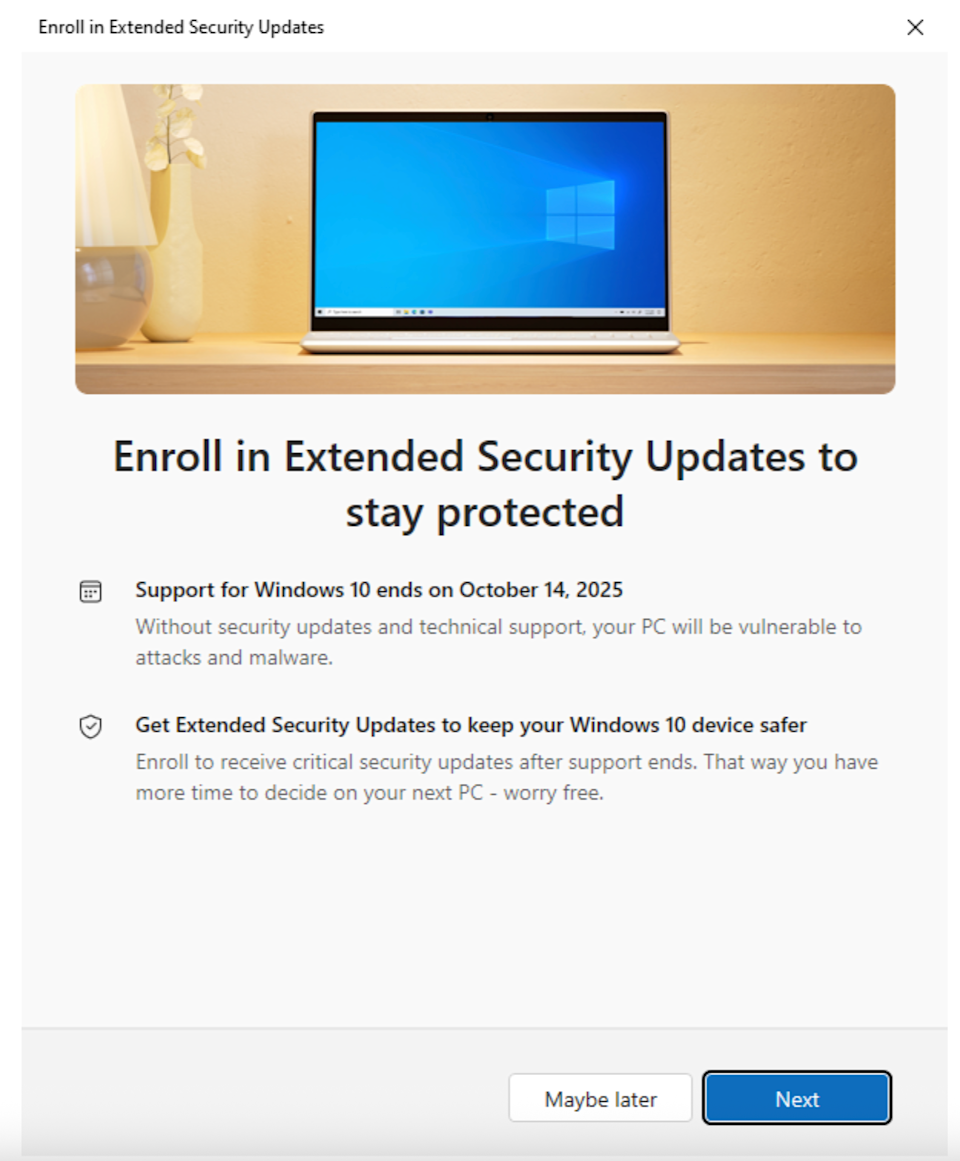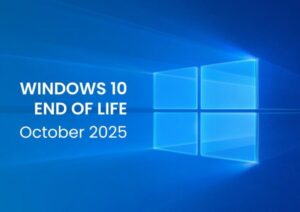After nearly a decade of reliable service, Microsoft will officially end support for Windows 10 on October 14, 2025. If you’re still using Windows 10, now is the perfect time to plan your next steps — whether that’s upgrading to Windows 11 or exploring alternative systems.
What Does “End of Support” Actually Mean?
When Microsoft ends support, it means:
- No more security updates: Your PC will become more vulnerable to new viruses and exploits.
- No technical assistance from Microsoft.
- No bug fixes or performance patches.
You’ll still be able to use Windows 10, but your device will gradually become unsafe — especially for online banking, business use, or storing sensitive data.

Windows 10 will continue to function, but without security updates after October 2025.
Why Microsoft Is Ending Windows 10 Support
Windows 10 was first launched in 2015, and Microsoft typically supports each version for about a decade. With the release of Windows 11, the company is focusing on performance, security, and AI-based features that the older OS can’t fully support.
In short, Windows 10 had a great run — but it’s time for an upgrade.
Your Options After Windows 10
1. pgrade to Windows 11
If your computer meets the TPM 2.0 and Secure Boot requirements, you can upgrade for free. Go to Settings → Update & Security → Windows Update and check if your PC is eligible for Windows 11.
2. Buy a New PC
If your device doesn’t meet the requirements, consider a new PC that ships with Windows 11 preinstalled. This ensures long-term compatibility and better performance.
3. Switch to Linux or ChromeOS Flex
For older computers, you can install:
- Linux Mint or Ubuntu — for a full desktop experience.
- ChromeOS Flex — lightweight, secure, and ideal for browsing or educational use.
Extended Security Updates (ESU)
Microsoft has confirmed that it will offer Extended Security Updates (ESU) for Windows 10 after October 2025 — available for both businesses and individual users.
That means you can still receive critical updates for a yearly subscription fee. However, these updates won’t add new features — they’re purely for security.
How to Prepare for the Transition
- Backup your data — use OneDrive, Google Drive, or an external drive.
- Check app compatibility — some older software might not work on Windows 11.
- Clean up your storage — uninstall unused apps and clear junk files.
- Create a recovery drive — use Microsoft’s Media Creation Tool.
Why You Shouldn’t Stay on Windows 10 After 2025
It might be tempting to keep using Windows 10, but here’s why it’s risky:
- Unpatched vulnerabilities can be exploited by malware.
- Many new apps and browsers will drop support.
- Hardware drivers may stop being updated.
"Using Windows 10 after 2025 is like driving an old car without insurance — it works, but you’re not protected."
The End of an Era — and a New Beginning
Windows 10 defined a generation of computing — fast, familiar, and reliable. But as technology moves forward, embracing change will ensure your devices remain secure and powerful.
Whether you upgrade to Windows 11 or switch to another system, this is your chance to modernize and move ahead confidently.
💬 What’s Next for You?
Have you already planned your Windows 10 exit strategy? Share your thoughts in the comments below.



May I know the lowest rating?
How long the ESU be lasting?
tester